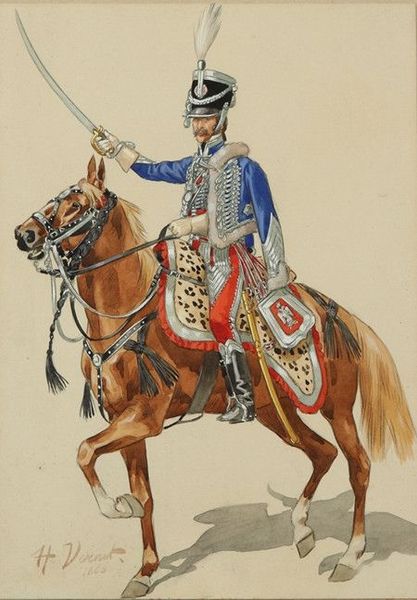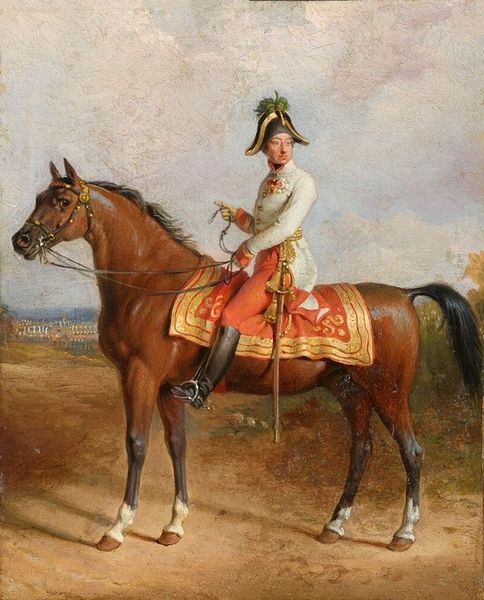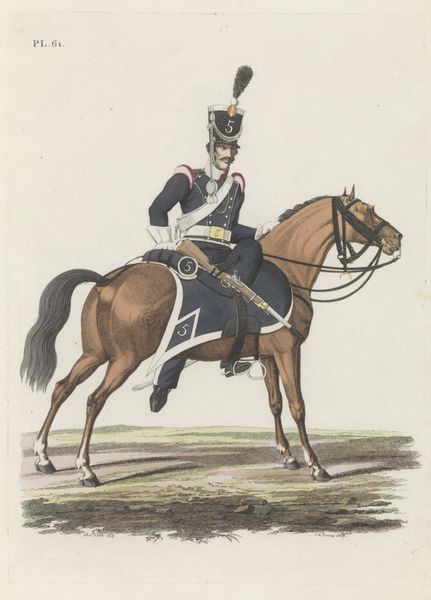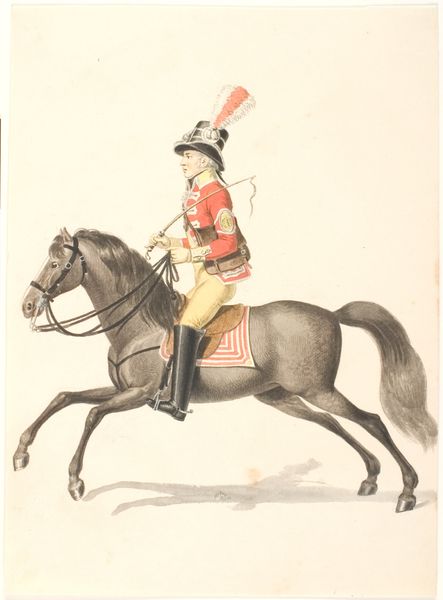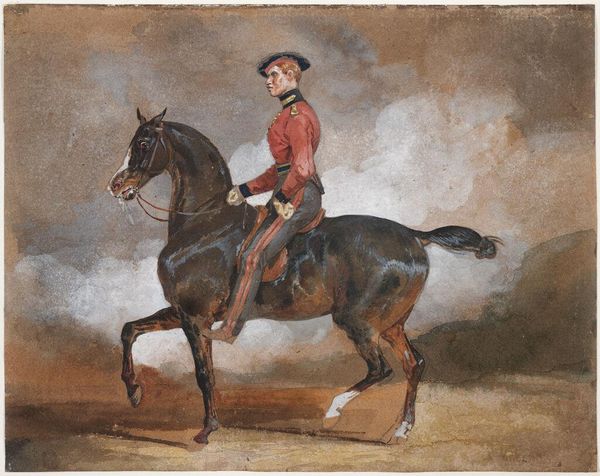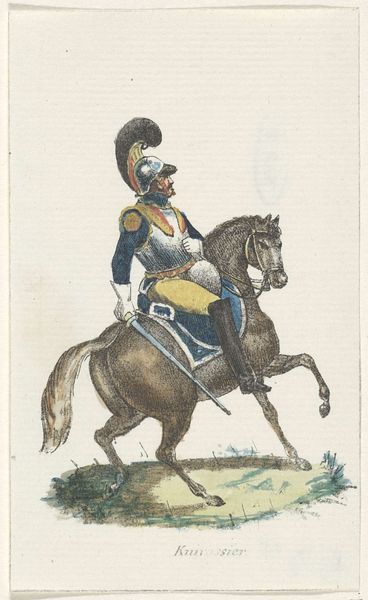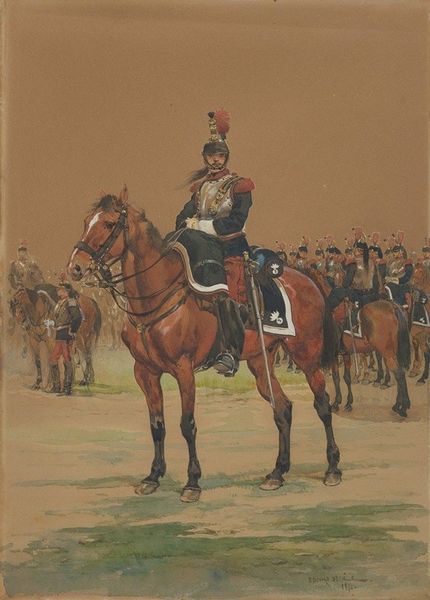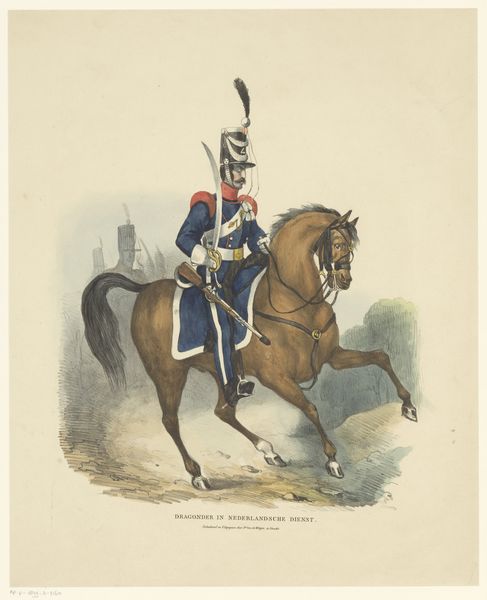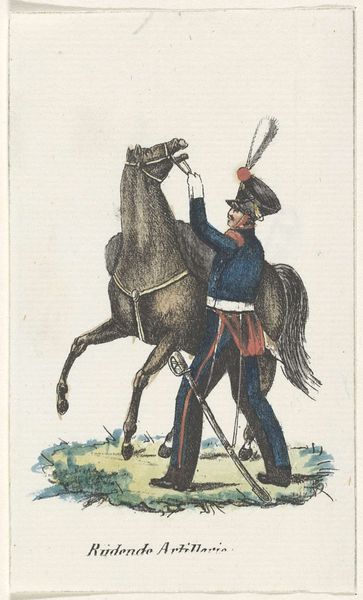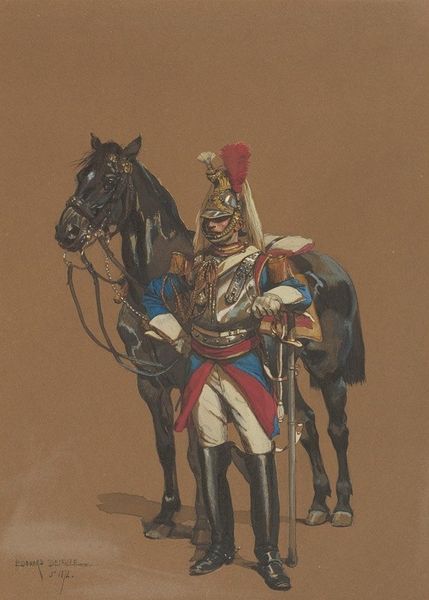
watercolor
#
landscape
#
oil painting
#
watercolor
#
genre-painting
#
history-painting
#
watercolor
Copyright: Public Domain: Artvee
Curator: This watercolor piece, dating from 1873, is titled "Portrait équestre, éclaireur à cheval," or "Equestrian Portrait, Scout on Horseback," created by Georges Jules Victor Clairin. Editor: It projects a sense of contained tension. The high-key colors evoke dust and heat, yet the man’s stance and gaze suggest watchfulness, expectation of movement and action. Curator: That’s astute. Clairin employs a masterful watercolor technique here, manipulating the flow and layering of pigments to define both the form and the overall composition. Consider the diagonal emphasis, from the upper left wash, drawing attention to the horse and rider and continuing downward with the slope of the ground, resulting in visual tension, don’t you think? Editor: Precisely! Horses throughout history represent power, control, nobility… and the rider, a soldier with his rifle, amplifies this. He's part of that archetypal imagery of military prowess that seems embedded in the cultural psyche. The way the horse mirrors the scout's alertness feels intentional, underscoring a symbiotic bond of man and animal, both vigilant and wary. Curator: Indeed. There’s also the chromatic relationship. The brown of the horse complements and nearly blends in with the uniform, rooting it in an earthly, grounded tonality, don't you think? Conversely, the soldier’s red hat and belt create visual interruptions in that tonal range and add just a hint of destabilizing contrast, echoing his readiness for possible action, ready to go, if you will. Editor: The horse’s head seems subtly larger compared to the rider's, at least in my viewing. If intentional, it may reinforce that symbolic hierarchy of animal instinct and the primal aspect of human experience, no? It all speaks volumes about how humans have historically placed themselves within the natural world. Curator: I see your point about scale and the "hierarchy." As you stated, these features allow this study of a soldier to transcend mere documentation and perhaps resonate across time, continuing to trigger our primal response to danger and power. Editor: That resonates strongly. This painting is perhaps both a snapshot of a specific historical figure, but speaks to more enduring and potent aspects of collective imagination and history.
Comments
No comments
Be the first to comment and join the conversation on the ultimate creative platform.
